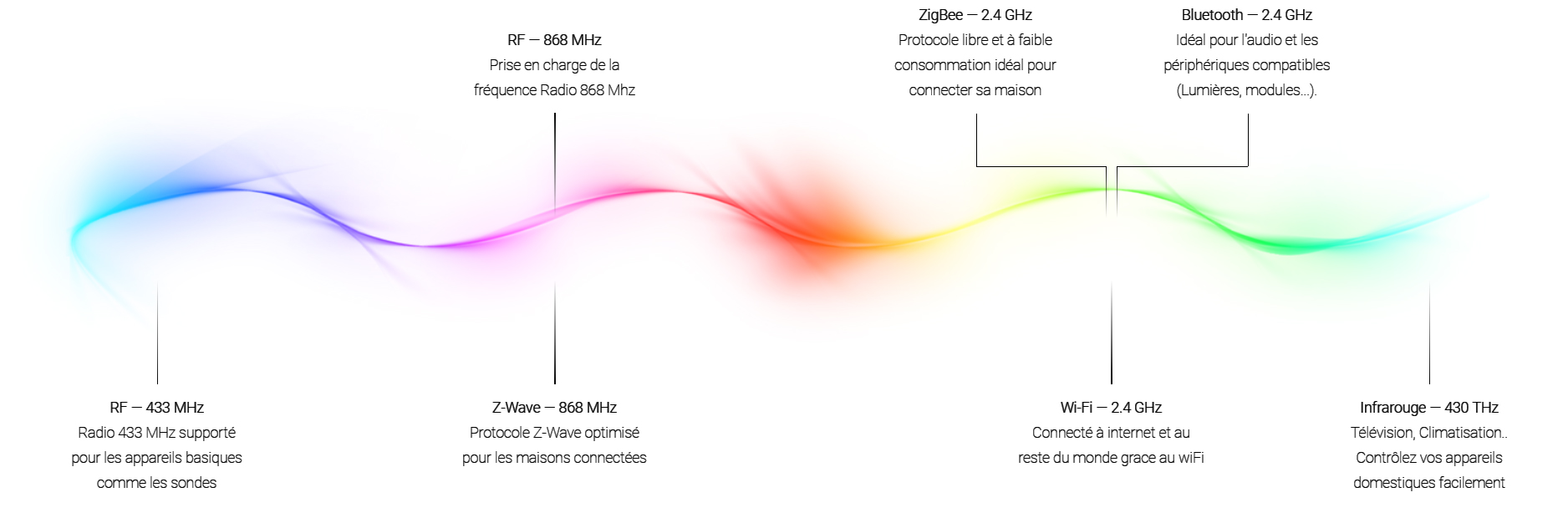There are many communication protocols used in the field of home automation to connect and control the devices and services in your home. Here are some of the most commonly used protocols, along with their typical usage frequencies:
- Z-Wave:
Z-Wave is a wireless communication protocol that uses radio frequency to allow devices to communicate with each other. It operates on a radio frequency of 868 MHz in Europe and 908 MHz in North America. It is very popular in the field of home automation due to its low energy consumption and extended range. - Zigbee:
Zigbee is another wireless communication protocol that uses radio frequency to enable devices to communicate. It operates on a radio frequency of 2.4 GHz. It is also highly popular in the home automation sector due to its low power consumption and extended range. - Wi-Fi:
Wi-Fi is a wireless communication protocol that uses radio waves to enable devices to communicate with a local network or the Internet. It operates on radio frequencies of 2.4 GHz or 5 GHz. It is very commonly used in homes and businesses to connect devices such as computers, mobile phones, and smart home devices. - 433 MHz:
The 433 MHz wireless communication protocol is one of the most widely used in the field of home automation. It operates on a radio frequency of 433 MHz to allow devices to communicate with each other. This frequency is in the medium wave band, which is used for short-distance data transmission. - LAN:
LAN (Local Area Network) is a communication protocol that allows devices to communicate with each other on a local network, such as a business or home network. It uses network cables or wireless technologies to connect devices to one another. - Infrared:
Infrared is a communication protocol that uses invisible light waves to allow devices to communicate with each other. It is commonly used in remote controls and smart home devices such as thermostats and motion detectors. - Bluetooth:
Bluetooth is a wireless communication protocol that uses radio waves to allow devices to communicate with each other over short distances. It is widely used in portable devices such as mobile phones and Bluetooth speakers. Bluetooth operates on a frequency of 2.4 GHz to transmit data. - EnOcean:
EnOcean is a wireless communication protocol that uses ambient energy, such as light or movement, to power and transmit data between devices. It is often used in smart home devices such as motion sensors and wireless switches. EnOcean operates on a frequency of 315 MHz or 868 MHz to transmit data.
It is important to choose the communication protocol that best suits your needs and smart home environment. If you need to connect devices over short distances, like portable devices, Bluetooth may be a good option. If you want to use devices powered by ambient energy, EnOcean might be a solution. If you need to connect devices to a local network or the Internet, Wi-Fi may be the most suitable choice. Ultimately, the choice of communication protocol depends on your needs and smart home setup. Note that the cost of sensors may vary significantly depending on the protocol.
In my case, the priorities in my setup are, in order of importance: Zigbee, Wi-Fi, LAN, and Bluetooth.

